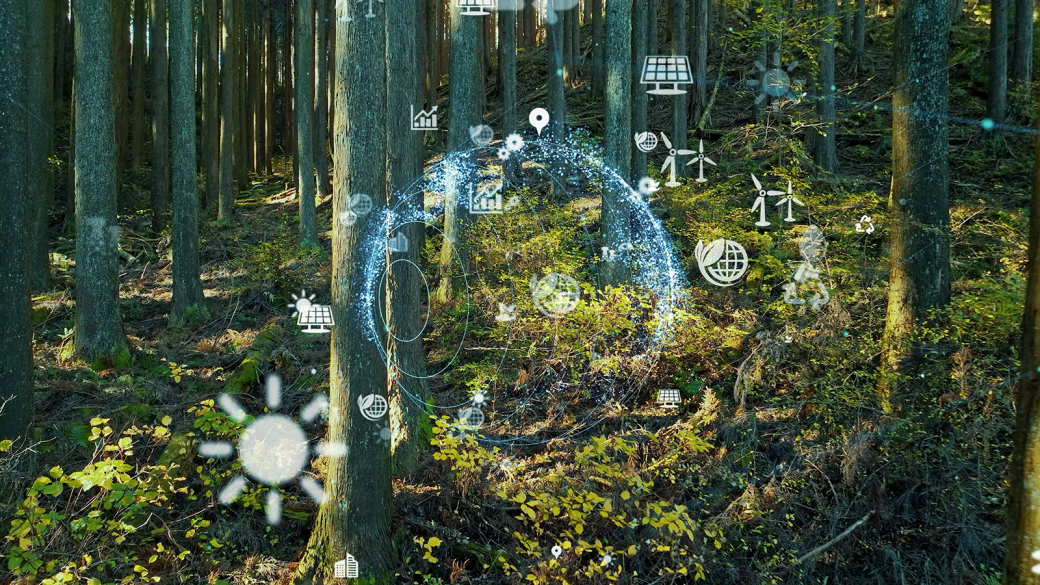Use AI to automatically keep your digital twin models up-to-date to meet your production plans.
Find out more
Producers in the refining and petrochemicals industry have long been associated with high carbon emissions. According to the Rocky Mountain Institute, the global refining and petrochemical sectors emitted 1.4 and 1.6 gigatons of carbon dioxide in 2019, respectively. However, practices are changing. The industry is now making significant strides toward emissions reduction and creating a more sustainable future.
Refining and petrochemicals plants are complex processes made up of many hundreds of valves and instruments used to control the process. Before the advent of computers, these plants were controlled by an operator making manual adjustments to the valves and monitoring the process to keep it within its operating bounds. Given the difficulty of doing this by hand, many plants operated far away from their optimum operating point.
Today’s ubiquitous use of computers in the process industries has changed that. With these computers and state-of-the art Multivariable Process Control (MPC) software, producers can now drive these processes to their optimum operating point. By doing so, refineries and petrochemical plants can reduce their energy consumption while still meeting demand for their products, including gasoline and jet fuel and beyond to plastics. This reduces their overall carbon footprint while increasing their competitiveness.

Figure 1: Advanced technology dashboard
Global climate change has necessitated that those in the refining and petrochemical industries do all they can to reduce the amount of CO2 being emitted from their processing units. Reductions will come in the form of UN Scope 1 through 3 initiatives including energy optimization in existing plants, reducing the amount of ‘dirty’ energy imported and changing fuel products for low or no carbon alternatives.
MPC can play an important role in decarbonization efforts by helping to optimize and control complex processes to reduce greenhouse gas emissions, mainly CO2 as shown in Figure 1.
Here are some specific ways in which the MPC can help:
Renewable Energy Integration: Figure 2 illustrates how the MPC can help integrate renewable energy sources such as solar and wind power into the energy grid. Controlling the output of these sources and adjusting the load on other generators helps reduce CO2 emissions from traditional power sources such as coal and natural gas. For example, MPC can be used to control the output of wind turbines or solar panels in real-time, based on weather conditions and energy demand. This can help to maximize the amount of renewable energy that is generated and reduce the need for fossil fuel-based power generation.

Figure 2: Renewable energy sources
Energy Efficiency: The MPC can be used to optimize energy consumption in industrial processes, which are a major contributor to CO2 emissions. By controlling variables such as temperature, pressure, and flow rate more precisely, energy consumption can be minimized, reducing resultant CO2 emissions.

Figure 3: Model showing varibales interacting
Carbon Capture and Storage: The MPC can be used to optimize the operation of carbon capture and storage (CCS) systems, which are a key technology for reducing carbon emissions from industrial processes as depicted in Figure 3. By controlling multiple variables such as the flow rate and composition of gas streams, MPC can improve the efficiency and effectiveness of CCS systems, thereby reducing the amount of CO2 emitted to the atmosphere. By optimizing the operation of these systems, MPC can reduce the cost and energy consumption of CCS, making it a more viable option for decarbonization.
The key to multivariable control is that the different variables are interdependent, meaning that adjusting one variable can affect many others. By taking all of the variables into account and adjusting them together, the outcome produces a more effective and efficient system.
Typical benefits achieved include a 5% improvement in throughput, a 3% increase in yield, and a 10% reduction in energy consumption, resulting in a lower carbon footprint and helping companies reach their decarbonization goals.
Overall, multivariable control is a way to optimize the performance of complex systems with multiple interdependent variables and it is used in a wide range of process industries. MPC can help industries optimize their processes and reduce CO2 emissions, contributing to the global effort to decarbonize the economy and combat climate change.
For more information on how the MPC can help your plant meet its emissions goals on the path to decarbonization, please contact Brian Burgio, APC Program Manager.